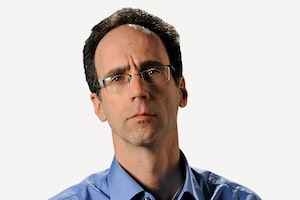A man convicted of murder nine years ago is asking the Supreme Court to hear his appeal, arguing that a juror brought information from outside the courtroom into deliberations, and that the judge overseeing the trial failed to understand the dangers of the internet age.
Christophe Lewis says the jury secrecy rule – a staple of Canada’s jury system, which makes it a crime for jurors to reveal anything about what went on in a jury room – needs to be reinterpreted in light of how easily today’s jurors can obtain information over the internet.
“With a click of a button, anyone can find out almost anything about anyone else at any time,” Mr. Lewis’s lawyers, Nader Hasan and Wes Dutcher-Walls, say in a document filed with the Supreme Court last week, requesting permission to file an appeal in the case, despite the three years that have passed since his appeal was rejected by the Ontario Court of Appeal.
(Usually, 60 days is the limit for seeking permission to appeal, but Mr. Dutcher-Walls says his client had difficulties communicating with his lawyers, partly because of time spent in segregation.)
“The jury secrecy rule that worked in the eras of the carrier pigeon, the telegraph, or even the telephone is no longer appropriate in the digital age,” the lawyers said in the document. “Without clear and meaningful rules about how to guard against extraneous information infecting jury deliberations, the risk of miscarriages of justice is ever-present. This case is one example.”
In 2011, a jury convicted Mr. Lewis of second-degree murder in the 2005 death of 24-year-old Kerlon Charles. Mr. Lewis was 20 when the killing happened, and 28 when convicted. He received the mandatory sentence of life in prison.
Ontario Superior Court Justice David McCombs set the ineligibility period for parole at 12 years, saying it was a “vicious and cold-blood murder,” but that he was entrepreneurial, having incorporated a modestly successful clothing business, had a daughter and could be rehabilitated. (Parole eligibility can be set between 10 and 25 years for second-degree murder.)
Soon after the conviction, a juror informed one of Mr. Lewis’s lawyers that another juror had made inappropriate comments in the jury room. Details of the comments cannot be reported because of a publication ban imposed by Justice McCombs.
Eventually, Mr. Lewis’s lawyers asked Justice McCombs to conduct an “inquiry” into the juror’s allegations, which were contained in an affidavit given to the court, and are now sealed.
Justice McCombs ruled, however, that based on the affidavit, the juror had offered “intrinsic” information involving matters of opinion, rather than “extrinsic” information that was not properly in evidence before the court.
Mr. Hasan said in an interview that the line drawn by the judge between extrinsic and intrinsic is “illusory in the digital age," when jurors don’t need to rely on bringing in hard evidence, such as a printed newspaper, before their jury colleagues, but can simply “pull it up on their phone and say, ‘Hey, I read about it at lunch.’”
Mr. Charles was lured to a vacant apartment to buy a gun, evidence showed. Armed men ambushed him and beat him with pool cues and other weapons while he pleaded with his attackers to stop. He died after being shot 11 times with a handgun.
The only eyewitness to give evidence in the trial was considered a disreputable character based on his own extensive involvement in crime, Justice McCombs wrote in his sentencing decision. The judge cautioned jurors on the dangers of relying on the eyewitness’s evidence, unless other evidence confirmed it. The eyewitness testified that Mr. Lewis was the one who shot Mr. Charles to death, out of revenge because Mr. Charles had previously robbed Mr. Lewis of guns and drugs.
The jury declined to convict Mr. Lewis of first-degree murder, but did convict him of second-degree murder, which Justice McCombs said showed they did not accept all of the witness’s evidence, but believed Mr. Lewis either intentionally helped the shooter knowing the intent was to kill Mr. Charles, or intended to forcibly confine him, knowing his death would likely follow.
In that context, the juror’s use of what Mr. Hasan and Mr. Dutcher-Walls call “prejudicial information” was a threat to a fair trial. The judge’s refusal to conduct an inquiry “may have concealed a miscarriage of justice,” they write in their filing at the Supreme Court. “This demands a new trial.”
Our Morning Update and Evening Update newsletters are written by Globe editors, giving you a concise summary of the day’s most important headlines. Sign up today.
 Sean Fine
Sean Fine